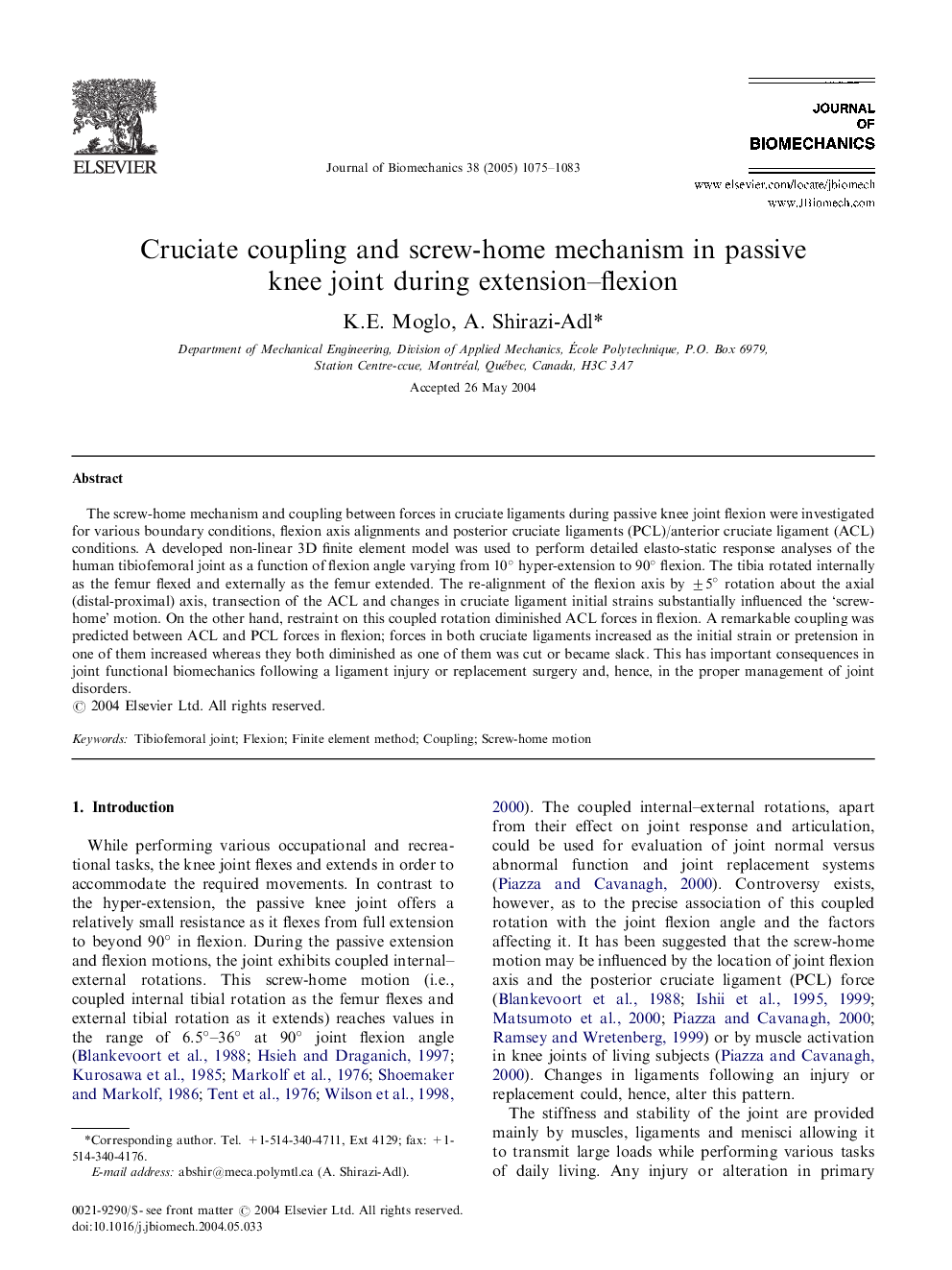| کد مقاله | کد نشریه | سال انتشار | مقاله انگلیسی | نسخه تمام متن |
|---|---|---|---|---|
| 10433819 | 910377 | 2005 | 9 صفحه PDF | دانلود رایگان |
عنوان انگلیسی مقاله ISI
Cruciate coupling and screw-home mechanism in passive knee joint during extension-flexion
دانلود مقاله + سفارش ترجمه
دانلود مقاله ISI انگلیسی
رایگان برای ایرانیان
کلمات کلیدی
موضوعات مرتبط
مهندسی و علوم پایه
سایر رشته های مهندسی
مهندسی پزشکی
پیش نمایش صفحه اول مقاله

چکیده انگلیسی
The screw-home mechanism and coupling between forces in cruciate ligaments during passive knee joint flexion were investigated for various boundary conditions, flexion axis alignments and posterior cruciate ligaments (PCL)/anterior cruciate ligament (ACL) conditions. A developed non-linear 3D finite element model was used to perform detailed elasto-static response analyses of the human tibiofemoral joint as a function of flexion angle varying from 10° hyper-extension to 90° flexion. The tibia rotated internally as the femur flexed and externally as the femur extended. The re-alignment of the flexion axis by ±5° rotation about the axial (distal-proximal) axis, transection of the ACL and changes in cruciate ligament initial strains substantially influenced the 'screw-home' motion. On the other hand, restraint on this coupled rotation diminished ACL forces in flexion. A remarkable coupling was predicted between ACL and PCL forces in flexion; forces in both cruciate ligaments increased as the initial strain or pretension in one of them increased whereas they both diminished as one of them was cut or became slack. This has important consequences in joint functional biomechanics following a ligament injury or replacement surgery and, hence, in the proper management of joint disorders.
ناشر
Database: Elsevier - ScienceDirect (ساینس دایرکت)
Journal: Journal of Biomechanics - Volume 38, Issue 5, May 2005, Pages 1075-1083
Journal: Journal of Biomechanics - Volume 38, Issue 5, May 2005, Pages 1075-1083
نویسندگان
K.E. Moglo, A. Shirazi-Adl,